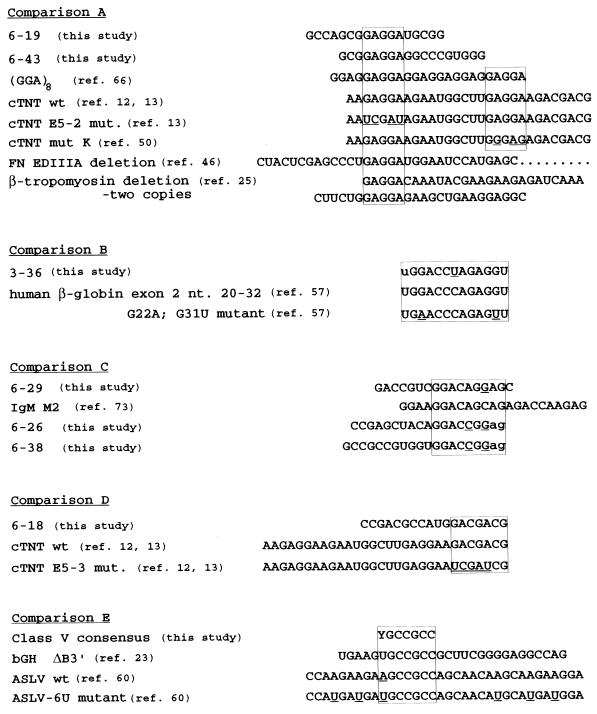FIG. 3.
Sequence comparison of individual dsx-N18 enhancers to other naturally occurring splicing enhancer sequences characterized previously by point mutation(s), block substitutions, or deletion mutations. Sequence homology is indicated by boxes. Individual dsx-N18 clone sequences and consensus motifs are designated as in Tables 1 and 2. The ASLV-6U mutant (mut.) shown has no loss of splicing enhancer function compared to the wild type (wt) yet shows an altered pattern of cross-linked factors (60). The third of the six point mutations in the ASLV-6U mutant generates a better match to the class V consensus motif. All other mutants result in at least some loss of splicing enhancer function in vitro or in vivo. Sequence polymorphisms, point mutations, and substitution mutations are underlined. Deletions are indicated by Δ. Due to the large size of some deletions, some sequence information inclusive of the deletion is omitted and indicated by an ellipsis.

